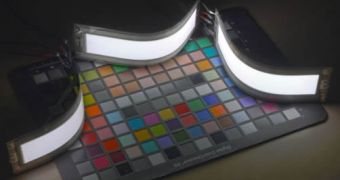Ideas for bendable screens have been shown before, but Siemens, or at least its Osram lighting division, may have come up with the best one yet.
The widely known engineering company revealed a flexible ribbon made of plastic, which can emit light.
This is, basically, a foldable OLED strip, one that might actually be energy-efficient enough to be used in actual products.
As already mentioned, bendable OLEDs have been made before, but their energy use was far too high, especially for something that is supposed to replace LED-backlit LCDs.
The ribbons that Siemens put together are made of plastic augur and are more efficient than a halogen lamp and conventional incandescent light bulbs.
For those who want specifics, the 11-cm x 3-cm (4.3-inch x 1.2-inch) plastic ribbon yields 32 lumens of light per watt.
Halogen lamps produce 10-20 lumens per watt, while a regular light bulb works at about the same ratio, give or take.
Only Energy saving “CFL” (compact fluorescent bulbs) best the new invention, with 30-70 lumens per watt (lm/w).
The reason OLEDs are being so thoroughly researched right now is their lack of need for backlighting.
Since they can produce their own light, they have already been used in super-thin TVs, like the 55-inch models from Samsung and LG.
Now that Siemens has actually figured out how to make them fold in on themselves, bendable phones, tablets and TVs can start being planned.
It should not be too hard to make the leap from this to OLEDs being built into clothing, furniture wallpaper and even entire buildings.
Unfortunately, this latest research is still in early prototype and testing stage, so it will take years before practical implementations appear.
Finally, it bears noting that other flexible screen technologies are in the works, like Samsung's AMOLED that may actually arrive this year (2012).

 14 DAY TRIAL //
14 DAY TRIAL //